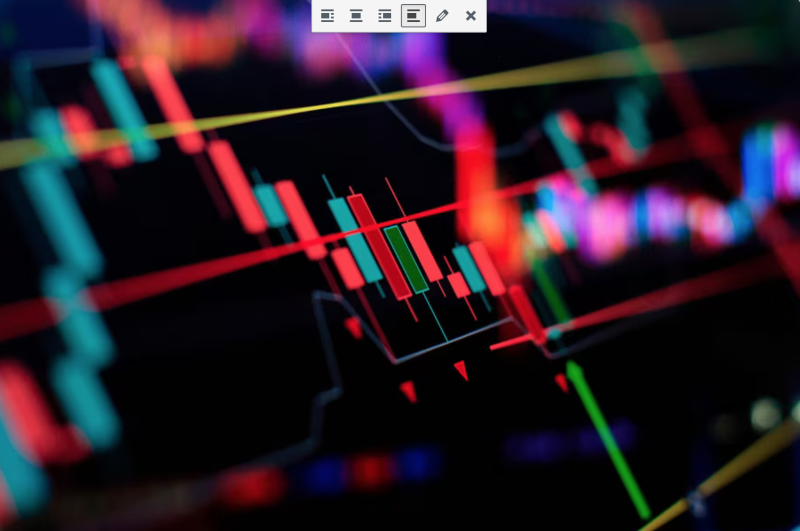by Liz Ann Sonders, Chief Investment Strategist, Jeffrey Kleintop, Kathy Jones and Kevin Gordon, Charles Schwab & Company Ltd.
While surface-level economic data appear resilient, details below the surface are mixed.
Meanwhile, Treasury yields are at their highest levels in years and bond market volatility has risen in recent weeks. Uncertainty about the direction of the Fed policy amid the mixed economic signals is keeping investors on edge.
U.S. stocks and economy: Churn below the surface
Yet, for all the positive aspects of the labor update, there are still several indicators that fail to support a robust jobs picture. For example, temporary help services payrolls—a leading indicator for overall employment—have fallen substantially from their all-time high, and the number of full-time positions seems to have peaked for now.
Temporary help services payrolls have declined recently

Source: Charles Schwab, Bloomberg, Bureau of Labor Statistics (BLS), as of 9/30/2023.
The temporary help services industry comprises establishments primarily engaged in supplying workers to client businesses for limited periods of time to supplement the client workforce. U.S. recessions are defined by the National Bureau of Economic Research.
Admittedly, though, recession risks are still with us, evidenced by the recent triple threat of the increase in the value of the U.S. dollar, oil prices, and Treasury bond yields. All three metrics have moved higher since the summer, each putting downward pressure on key areas of the economy and market. All else being equal, a stronger dollar tends to weigh on foreign revenues for U.S. companies; higher oil prices sap spending power and are inflationary; and rising yields (particularly inflation-adjusted yields) are typically synonymous with tightening financial conditions.
The U.S. dollar, oil prices and the 10-year Treasury yield have risen

Source: Charles Schwab, Bloomberg, as of 10/6/2023.
The Bloomberg Dollar Spot Index tracks the performance of a basket of 10 leading global currencies versus the U.S. dollar. Brent crude oil is the leading global price benchmark for Atlantic basin crude oils and is one of the two main benchmark prices for purchases of oil worldwide, the other being West Texas Intermediate. Indexes are unmanaged, do not incur management fees, costs and expenses and cannot be invested in directly. Past performance is no guarantee of future results.
Undoubtedly, all three have contributed to the S&P 500® Index's decline since its July peak. While the rally up until that point was narrow in nature, the selloff has been broad-based—sparing virtually no corner of the market. The Energy sector has been an outperformer among its peers, but the strong tie to oil prices means it remains heavily exposed to macroeconomic swings.
Much like parts of the economy and labor market, there are signs of deterioration under the market's surface. Not only are a handful of mega-cap stocks in the S&P 500 still accounting for most of the market's gain this year, the "average stock" continues to underperform. The performance of the S&P 500 Equal Weighted Index relative to the market-capitalization-weighted S&P 500 has recently fallen to its lowest level since November 2020. Any failure to turn would likely portend further weakness for stocks, especially if economic momentum falters.
Market breadth remains near multi-year lows

Source: Charles Schwab, Bloomberg, as of 10/6/2023.
Chart shows the ratio between the S&P 500 Equal Weighted Index and the market-capitalization-weighted S&P 500 Index. The S&P 500 Equal Weight Index (EWI) includes the same constituents as the capitalization-weighted S&P 500 Index, but each company in the S&P 500 EWI is allocated a fixed weight - or 0.2% of the index total at each quarterly rebalance. Indexes are unmanaged, do not incur management fees, costs and expenses and cannot be invested in directly. Past performance is no guarantee of future results.
Fixed income: Proceed with caution
The Treasury yield spread has narrowed

Source: Bloomberg. Market Matrix US Sell 2 Year & Buy 10 Year Bond Yield Spread (USCY2Y10 INDEX). Daily data as of 10/9/2023.
The rates are composed of Market Matrix U.S. Generic spread rates (USYC2Y10). This spread is a calculated Bloomberg yield spread that replicates selling the current 2-year U.S. Treasury note and buying the current 10-year U.S. Treasury note, then factoring the differences by 100. A basis point is one one-hundredth of a percentage point, or 0.01%. Past performance is no guarantee of future results.
Given all of these crosscurrents, it's not surprising that volatility in the bond market has moved up in recent weeks. Uncertainty about the direction of the Fed policy amid the mixed signals is keeping investors on edge.
Bond market volatility has risen

Source: Bloomberg. Merrill Option Volatility Estimate (MOVE) Index. Daily data as of 10/9/2023.
The MOVE Index is a yield-curve-weighted index of the normalized implied volatility on one-month Treasury options.
There is still a risk of one more rate hike in this cycle, but we think that likelihood is diminishing. It will depend on the path of economic growth and inflation, but with volatility picking up and inflation low, the Fed runs the risk of overdoing its tightening and triggering a recession or a financial market problem. If we're correct that the Fed is at or near the end of its tightening cycle, then bond yields should begin to move lower in the fourth quarter and into 2024. There will likely continue to be a lot of volatility, however, so just like the Fed, investors should proceed with caution.
Global stocks and economy: Europe's labor outlook
Eurozone employment now stands at an all-time high, with 5.3 million more jobs than before the pandemic, according to Eurostat data. At the same time, 10.9 million people are unemployed in the eurozone, 1.3 million fewer than before the pandemic. The unemployment rate is now 6.4%, in line with the all-time low set in June. Yet, leading indicators of the labor market in Europe are showing signs that this strength may soon ease:
- In Germany, the number of people who have filed unemployment claims rose for an eighth straight month in September, according to the Federal Statistical Office of Germany.
- The number of reported job vacancies in Germany continued to slide in September.
- The manufacturing employment Purchasing Managers' Index (PMI) points to a fall in employment in the coming months. Changes in the employment PMI tend to lead changes in employment by six to nine months, as you can see in the chart below.
Changes in employment PMI tend to lead changes in employment

Purchasing Managers’ Index™ (PMI™) data are compiled by S&P Global for more than 40 economies worldwide. The monthly data are derived from surveys of senior executives at private sector companies. The PMI dataset features a headline number, which indicates the overall health of an economy, and sub-indices, which provide insights into other key economic drivers such as GDP, inflation, exports, capacity utilization, employment and inventories.
- Europe has four times as many services jobs as manufacturing jobs, per Eurostat. The former strength in services employment appears to have started to weaken. The services PMI employment index was below 50 (the level that separates expansion from contraction) in Germany in September and in Italy in August and has come down sharply in recent months in France and Spain, consistent with a worsening outlook for services employment.
- European company management communications on earnings calls and shareholder presentations reveal a rising trend of mentions of job cuts (including phrases like reduction in force, layoffs, headcount reduction, employees furloughed, downsizing, personnel reductions) along with a falling trend in mentions of labor shortages (including phrases like labor shortages, inability to hire, difficulty in hiring, struggling to fill positions, driver shortages).
A low unemployment rate implies higher wage growth, which could force the ECB to continue to hike rates, and consequently put more downward pressure on the economy and stock market. Worryingly, wage growth has remained stubbornly high in Europe even as it has eased in the United States. Having peaked later in Europe than in the U.S., higher inflation gave workers the opportunity to demand larger pay rises in a tight labor market. Looking forward, European households' expectations for inflation over the next 12 months has already fallen sharply. If headline inflation continues to recede over the coming year as we expect, it seems likely that inflation expectations will track lower, prompting workers to eventually settle for lower pay increases.
Inflation expectations have eased

Forecasts contained herein are for illustrative purposes only, may be based upon proprietary research and are developed through analysis of historical public data.
Copyright © Charles Schwab & Company Ltd.













